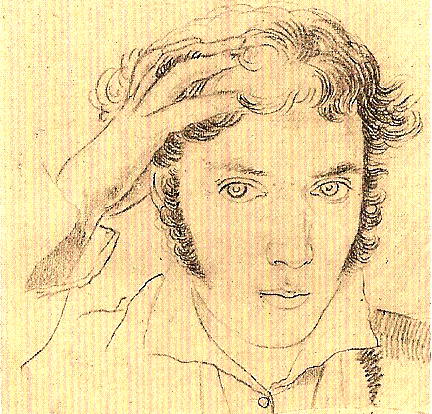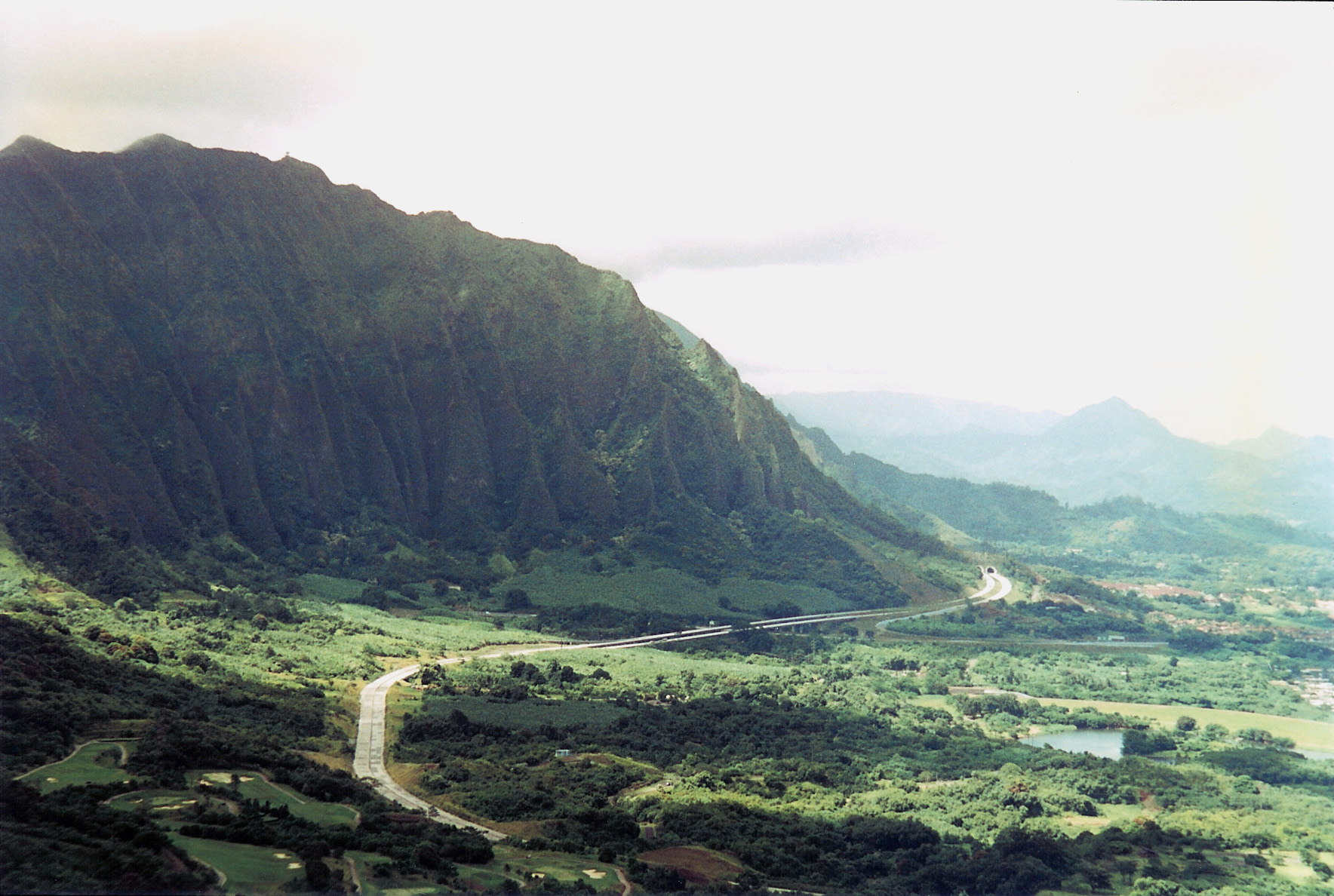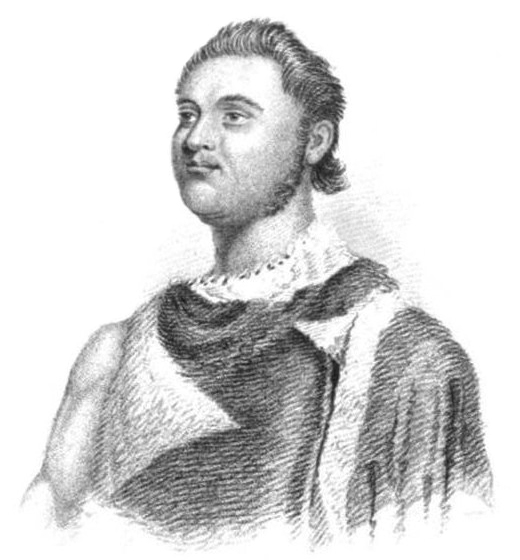|
Keeaumoku II
George Cox Kahekili Keʻeaumoku II or Keʻeaumoku ʻOpio (1784–1824) was part of an influential family at the time of the founding of the Kingdom of Hawaii. he served as a military leader, and then became a convert to Christianity and Royal Governor of Maui. He is sometimes called Keʻeaumoku III if Keʻeaumoku Nui is counted as Keʻeaumoku I and Keʻeaumoku Pāpaʻiahiahi is counted Keʻeaumoku II instead. Life He was born probably in 1784. His father was Keʻeaumoku Pāpaʻiahiahi (1736–1804), a noble from Hawaiʻi Island, and his mother was Nāmāhānaʻi Kaleleokalani, the wife of her half-brother the King of Maui, Kamehameha Nui. From his mother he was a related to many of the kings of Maui. His father had been a counsellor and supporter of Kamehameha I during his early years. As the eldest son of Keʻeaumoku, he succeed his father as a counsellor during the last years of Kamehameha's campaigns in 1804. He was appointed governor of Maui and adjacent islands of Molok ... [...More Info...] [...Related Items...] OR: [Wikipedia] [Google] [Baidu] |
Adrien Taunay The Younger
Adrien Taunay the Younger (1803 – 5 January 1828) was a French painter and draftsman. He was born in Paris in 1803, the son of history and genre painter Nicolas-Antoine Taunay (1755–1830). Adrien moved to Rio de Janeiro in 1816, accompanying his father, who was a member of the French Artistic Mission. Adrien was the junior draftsman aboard the French vessel of exploration ''Uranie'', commanded by Captain Louis de Freycinet. During the ship's 22-day stay in Hawaii in 1819, Adrien Taunay working with the official artist Jacques Arago (1790–1855), produced many portraits and natural history drawings. They depicted the local people and landscape at a time when Hawaii was becoming a whaling center and part of the trade route with China. After completion of this voyage, Adrien returned to Rio de Janeiro in 1820, and devoted himself to the study of arts and languages. He succeeded Johann Moritz Rugendas (1802–1858), to the position of first draughtsman of the exhibition led ... [...More Info...] [...Related Items...] OR: [Wikipedia] [Google] [Baidu] |
Battle Of Nuʻuanu
The Battle of Nuʻuanu ( Hawaiian: ''Kalelekaʻanae''; literally the leaping mullet), fought in May 1795 on the southern part of the island of Oʻahu, was a key battle in the final days of King Kamehameha I's wars to conquer the Hawaiian Islands. It is known in the Hawaiian language as ''Kalelekaʻanae'', which means "the leaping mullet", and refers to a number of Oʻahu warriors driven off the cliff in the final phase of the battle. There are "varied and sometimes conflicting histories of the Battle of Nuʻuanu." Prior to the battle Oʻahu Around the year 1792 (the exact date is unknown; the landing could have been as late as February 1795), Captain William Brown, an English merchant, landed in the harbor of Honolulu. As a maritime fur trader and gun seller, he made several voyages before from the Pacific Northwest coast to the Hawaiian islands in command of the Butterworth Squadron. Captain Brown landed several vessels on the island; the ones noted are the two sloops ''Prin ... [...More Info...] [...Related Items...] OR: [Wikipedia] [Google] [Baidu] |
Lahaina, Hawaii
Lahaina ( haw, Lāhainā) is the largest census-designated place (CDP) in West Maui, Maui County, Hawaii, United States and includes the Kaanapali and Kapalua beach resorts. As of the 2020 census, the CDP had a resident population of 12,702. Lahaina encompasses the coast along Hawaii Route 30 from a tunnel at the south end, through Olowalu and to the CDP of Napili-Honokowai to the north. During the tourist season, the population can swell to nearly 40,000 people. Lahaina's popularity as a tropical getaway has made its real estate some of the most expensive in Hawaii; many houses and condominiums sell for more than $5 million. History In days of native rule Lahaina was the royal capital of Maui Loa, ("high chief") of the island of Maui, after he ceded the royal seat of Hana to the ruler of Hawaii Island. In Lahaina, the focus of activity is along Front Street, which dates back to the 1820s. It is lined with stores and restaurants and often packed with tourists. The Ba ... [...More Info...] [...Related Items...] OR: [Wikipedia] [Google] [Baidu] |
George IV
George IV (George Augustus Frederick; 12 August 1762 – 26 June 1830) was King of the United Kingdom of Great Britain and Ireland and King of Hanover from the death of his father, King George III, on 29 January 1820, until his own death ten years later. At the time of his accession to the throne, he was acting as Prince Regent, having done so since 5 February 1811, during his father's final mental illness. George IV was the eldest child of King George III and Queen Charlotte. He led an extravagant lifestyle that contributed to the fashions of the Regency era. He was a patron of new forms of leisure, style and taste. He commissioned John Nash to build the Royal Pavilion in Brighton and remodel Buckingham Palace, and commissioned Jeffry Wyatville to rebuild Windsor Castle. George's charm and culture earned him the title "the first gentleman of England", but his dissolute way of life and poor relationships with his parents and his wife, Caroline of Brunswick, earned h ... [...More Info...] [...Related Items...] OR: [Wikipedia] [Google] [Baidu] |
Kamehameha Schools
Kamehameha Schools, formerly called Kamehameha Schools Bishop Estate (KSBE), is a private school system in Hawaii established by the Bernice Pauahi Bishop Estate, under the terms of the will of Princess Bernice Pauahi Bishop, who was a formal member of the House of Kamehameha. Bishop's will established a trust called the "Bernice Pauahi Bishop Estate" that is Hawaii's largest private landowner. Originally established in 1887 as an all-boys school for native Hawaiian children, it shared its grounds with the Bishop Museum. After it moved to another location, the museum took over two school halls. Kamehameha Schools opened its girls' school in 1894. It became coeducational in 1965. The Kapālama campus opened in 1931, while the Maui and Hawaii campuses opened in 1996 and 2001, respectively. It was developed at the bequest of Princess Bernice Pauahi Bishop to educate children of Hawaiian descent, and is designed to serve students from preschool through twelfth grade. The school teach ... [...More Info...] [...Related Items...] OR: [Wikipedia] [Google] [Baidu] |
Tikhanov - Boki And Hekili On The Kamchatka (1818)
Mikhail Tikhonovich Tikhanov (Михаил Тихонович Тиханов; 1789–1862) was a Russian artist who accompanied Captain Vasily Golovnin's circumnavigation aboard the frigate ''Kamchatka''. Biography Born a serf in 1789, Tikhanov showed artistic talent at the age of seventeen and was sent by his master Prince Galitzine to the Imperial Academy of Arts in Saint Petersburg. Freed in 1815, he worked at the Academy before being recommended by Alexey Olenin for the post of an expeditionary artist for Captain Vasily Golovnin and the expedition of the ''Kamchatka'' around the world. During the voyage from 1817 to 1819, Tikhanov painted at least 43 different pictures of important figures and scenes from Russian North America, Alaska, California and Hawaii. He specialized in human portraits and painted figures including Hawaiian notables King Kamehameha I and High Chief Boki, as well as Russian colonial governor Alexander Andreyevich Baranov. Hawaiian scholar David W. Fo ... [...More Info...] [...Related Items...] OR: [Wikipedia] [Google] [Baidu] |
University Of Hawaii Press
A university () is an institution of higher (or tertiary) education and research which awards academic degrees in several academic disciplines. Universities typically offer both undergraduate and postgraduate programs. In the United States, the designation is reserved for colleges that have a graduate school. The word ''university'' is derived from the Latin ''universitas magistrorum et scholarium'', which roughly means "community of teachers and scholars". The first universities were created in Europe by Catholic Church monks. The University of Bologna (''Università di Bologna''), founded in 1088, is the first university in the sense of: *Being a high degree-awarding institute. *Having independence from the ecclesiastic schools, although conducted by both clergy and non-clergy. *Using the word ''universitas'' (which was coined at its foundation). *Issuing secular and non-secular degrees: grammar, rhetoric, logic, theology, canon law, notarial law.Hunt Janin: "The university ... [...More Info...] [...Related Items...] OR: [Wikipedia] [Google] [Baidu] |
Queen Emma Of Hawaii
Emma Kalanikaumakaʻamano Kaleleonālani Naʻea Rooke (January 2, 1836 – April 25, 1885) was queen of Hawaii as the wife of King Kamehameha IV from 1856 to his death in 1863. She was later a candidate for the throne but King Kalākaua was elected instead. Names After her son's death and before her husband's death, she was referred to as "Kaleleokalani", or "flight of the heavenly one". After her husband also died, it was changed into the plural form as "Kaleleonālani", or the "flight of the heavenly ones". She was baptized into the Anglican faith on October 21, 1862 as "Emma Alexandrina Francis Agnes Lowder Byde Rooke Young Kaleleokalani. Queen Emma was also honoured in the 19th century mele "Wahine Holo Lio" (''horseback riding lady'') referring to her renowned horsemanship. Early life Emma was born on January 2, 1836, in Honolulu and was often called Emalani ("royal Emma"). Her father was High Chief George Naʻea and her mother was High Chiefess Fanny Kekelaokalani Y ... [...More Info...] [...Related Items...] OR: [Wikipedia] [Google] [Baidu] |
Bernice Pauahi Bishop
Bernice Pauahi Bishop KGCOK RoK (December 19, 1831 – October 16, 1884), born Bernice Pauahi Pākī, was an '' alii'' (noble) of the Royal Family of the Kingdom of Hawaii and a well known philanthropist. At her death, her estate was the largest private landownership in the Hawaiian Islands, comprising approximately 9% of Hawaii's total area. The revenues from these lands are used to operate the Kamehameha Schools, which were established in 1887 according to Pauahi's will. Pauahi was married to businessman and philanthropist Charles Reed Bishop. Ancestry, birth and early life Pauahi was born in Honolulu on December 19, 1831, in ʻAikupika the grass hut compound of her father, Abner Kuhooheiheipahu Pākī (c. 1808–1855). Pākī was an ''aliʻi'' (noble) from the island of Molokaʻi, and son of Kalani-hele-maiiluna, who descended from the ''aliʻi nui'' (ruling monarchs) of the island of Maui. Her mother was Laura Kōnia (c. 1808–1857), the younger daughter of Pauli K ... [...More Info...] [...Related Items...] OR: [Wikipedia] [Google] [Baidu] |
Governors Of Hawaii (island)
The Governor of Hawaii Island ( haw, Kiaaina o na Mokupuni o Hawaii) was the royal governor or viceroy of the Island of Hawaii during the Kingdom of Hawaii. The Governor of Hawaii was usually a Hawaiian chief or prince and could even be a woman. There were no restriction of women in government in the House of Nobles or Governorship of the islands. The Governor had authority over the island of Hawaii, the biggest island in the kingdom, and it was up to the governor to appoint lieutenant governors to assisted them. The governor had replaced the old Aliʻis of the islands, but sovereignty remained with the king. The island governors were under the jurisdiction of the Ministers of the Interiors. Role The 1840 Constitution of the Kingdom of Hawaii states: Abolition After King Kalākaua was forced to sign the Bayonet Constitution in 1887, the island governorships began to be viewed as wasteful expenses for the monarchy. The governors and governesses at the time (who were mainly ro ... [...More Info...] [...Related Items...] OR: [Wikipedia] [Google] [Baidu] |
Kuakini
John Adams Kiiapalaoku Kuakini (1789–1844) was an important adviser to Kamehameha I in the early stages of the Kingdom of Hawaii. He was responsible for contributing to the infrastructure among other changes in the Kona District during this era. Family life He was born about 1789 with the name ''Kaluaikonahale''. His father was Keʻeaumoku Pāpaiahiahi, an alii (noble) from the island of Hawaii, and his mother was NāmāhānaiKaleleokalani, the widow queen and half-sister of the late king of Maui, Kamehameha Nui. Historian Samuel Kamakau later makes the contradictory claim that Kaʻiana was Kuakini's father and also claimed he was a ''poʻolua'' child (possessing two head or father). Keʻeaumoku became a fugitive from King Kahekili II of Maui. Escaping to Hana, the family moved back to Hawaii island and lived on Kahaluu Bay. He was the youngest of four important siblings: sisters Queen Kaahumanu, Kamehameha's favorite wife and later became the powerful Kuhina nui, Kalāk ... [...More Info...] [...Related Items...] OR: [Wikipedia] [Google] [Baidu] |
Namahana Piʻia
Lydia Nāmāhāna Kekuaipiʻia (c. 1787 – 1829 ) was a wife of King of . She was the daughter of Keʻeaumoku Pāpaʻiahiahi, and her sisters and were also Kamehameha's wives. Kamehameha ... [...More Info...] [...Related Items...] OR: [Wikipedia] [Google] [Baidu] |
.jpg)




.jpg)


.jpg)
